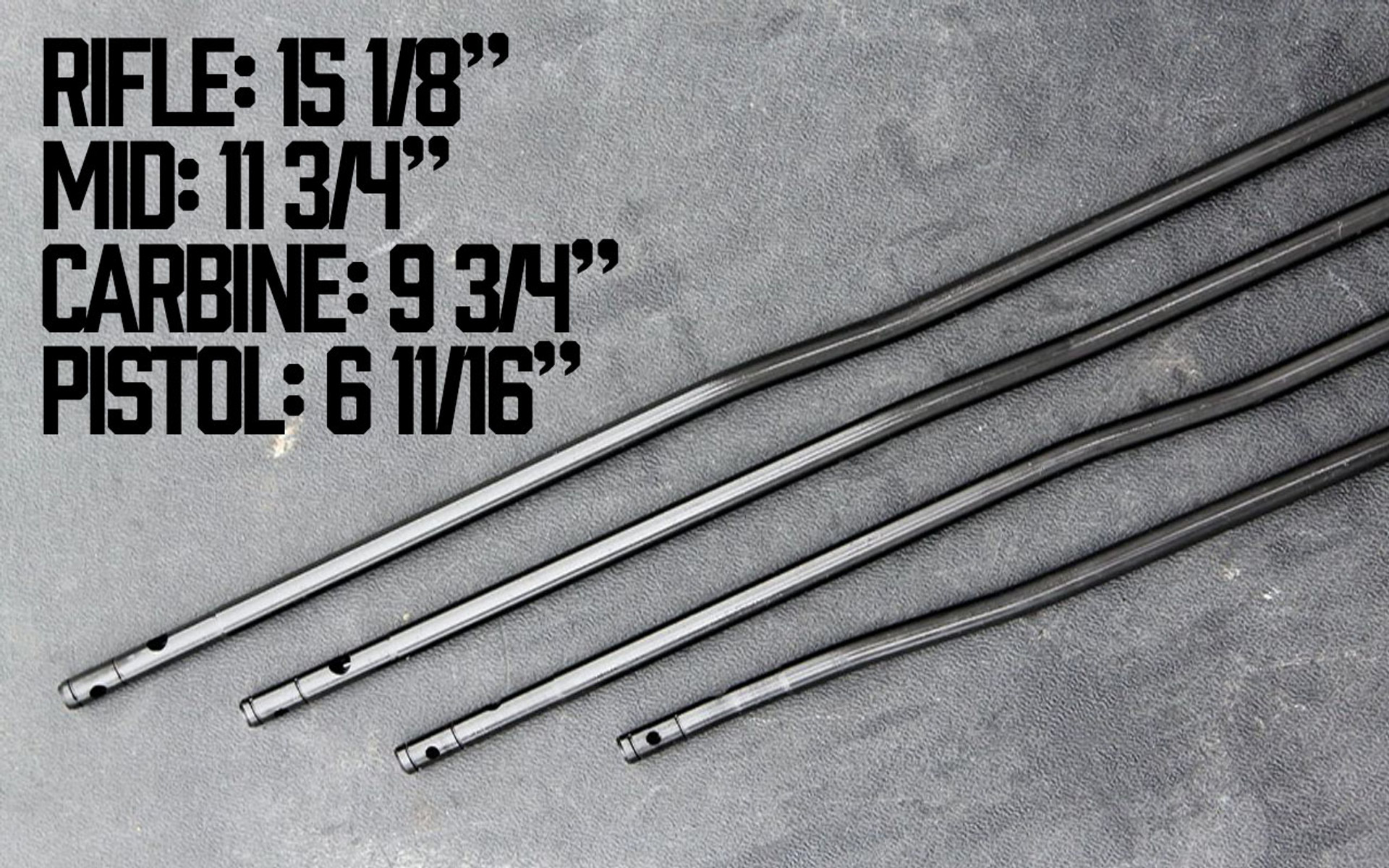AR15 Gas Tube Guide
AR 15 gas tube lengths can be - as most anything else on the AR15 platform, totally customized to whatever the shooter prefers or needs. So which AR 15 gas tube should we choose as shooters? What’s the best AR 15 gas tube? While AR gas tubes can seem insignificant, they’re anything but! Proper regulation of gas affects nearly everything about our AR’s performance, so they must be carefully considered. Let’s take a look at AR 15 gas tube lengths and what we should choose for our new build!
How Does AR-15 Gas System work?
The AR15 direct gas impingement system (also known as a DI system) is actually incredibly easy to understand. When the round is fired in the chamber the gas creates pressure in the chamber to propel the bullet out and some of that excess gas is redirected back towards the bolt-carrier groups through the AR gas tube to cycle the gun’s action.
On an AR-15 there is a small hole called a gas port in the barrel to vent gas. The vented gas travels through the gas block and gas tube into the receiver which causes the cycling mentioned above. When the bullet exits the barrel the gas stops flowing. The AR 15 gas tube length should be measured from the rear of the barrel to the gas port and shorter than the barrel.
The AR 15 gas tube length matters because of something called “dwell time”. Dwell time is the length of time a bullet is in the barrel after the shot is fired. The longer the barrel - the longer the dwell time will be, and conversely with a shorter barrel. Overly gassed systems will cause more recoil and more wear on the rifle, causing it to wear out faster.
AR15 Gas Tube Lengths
There are only four different types of gas tube lengths but it would do you well to familiarize yourself with these so you don't buy the wrong length. Even if you get it wrong the first time, that's okay, it just means you'll have to build another AR15 for it! (Don't mind the fractions in our image above, when in doubt, just round up!)
Pistol Length Gas System
A pistol length AR15 gas tube is usually around 6.75 inches and are designed for barrels 10 inches or less. The gas port is usually drilled around 4 inches from the rear of the barrel as stated above. The AR 15 gas system needs to make the port length and then a couple more inches to lock into the gas key on the bolt carrier group.
Carbine Length Gas System
A carbine length AR15 gas system again - depends on the barrel length. Carbine length barrels are typical from 10-18 inches - typically seen at 16 inches. While that might seem like a mid-length AR15 (more on that below), it’s also considered to be carbine length.
Port distance on a carbine-length AR15 gas system is usually around seven inches from the rear of the barrel. As stated above, we must remember the AR15 gas system needs to be a couple inches longer than the gas port to lock into the gas key, so we’ve got to keep that in mind!
Mid-Length Gas System
Mid-length AR15 barrels are usually 14 to 20 inches - falling right into the carbine space. So what is the difference between carbine-length and mid-length?
Mid-length is not about barrel length when we hear that terminology. Instead, the mid-length designation refers to the length of the gas system itself. Mid-length AR15s will have the gas block mounted further down the barrel than a carbine length gun and because of this, a longer AR gas tube system and a longer handguard to cover the gas system.
Port distance on a mid-length barrel is usually about 9 inches from the rear of the barrel. As we’ve stated, you guessed it - the AR 15 gas tube length will still need to be a couple inches longer to lock into the gas key.
Rifle Length Gas System
Ah yes, the long boys. An AR 15 rifle-length gas tube is created for rifles with barrels 20 inches or longer. Because of the barrel length the rifle-length AR gas tubes will obviously need to be longer. Usually an AR 15 rifle-length gas tube will be right around 15 inches (15.125 is the common length).
Port distance on a rifle-length AR gas system is usually right around 12 inches. Remember that as usual, an AR 15 rifle-length gas tube will be a few inches longer than the gas port.
Assemble an AR-15 with 80% Arms!
We hope this helps break through some of the mystery surrounding the AR-15 gas tube - as well as the reasons behind choosing the proper AR 15 gas tube length. Remember that as we stated above, having a properly gassed AR-15 can provide more manageable recoil and keep excess wear off your rifle. A great AR-15 is an investment and it’s important to keep the gun in great shape after all!
Don’t feel like dealing with hunting down the right AR-15 gas tube and other parts? Have no fear! Your buddies here at 80% Arms have done the work for you! Check out our build kits and consider building a custom AR-15 at home with all the necessary parts already included for the optimum rifle!



 Back to List
Back to List